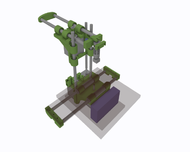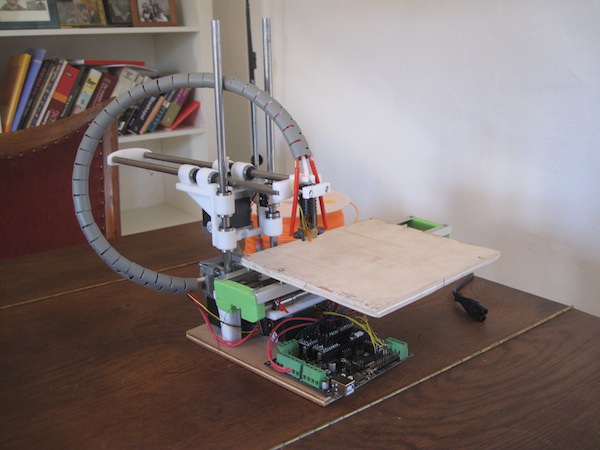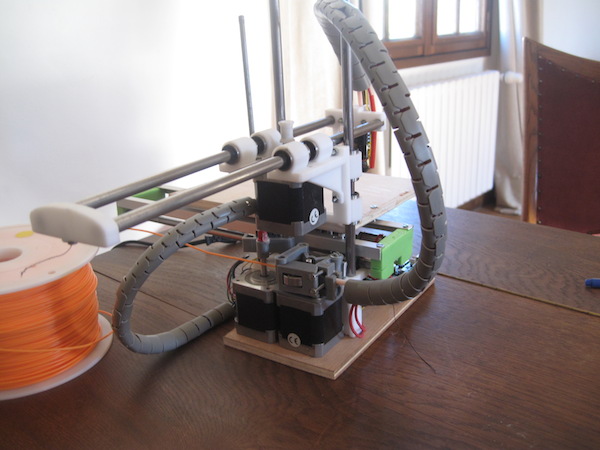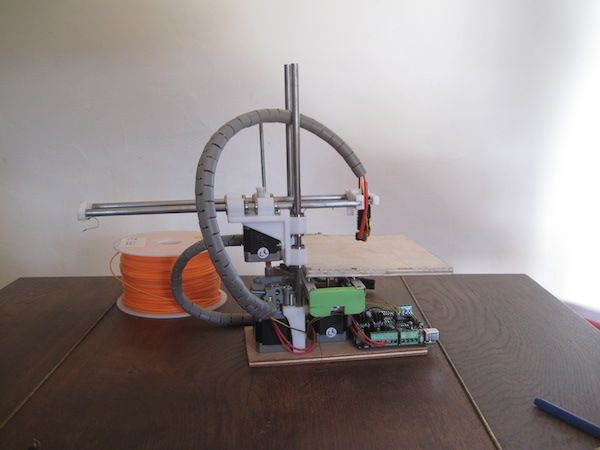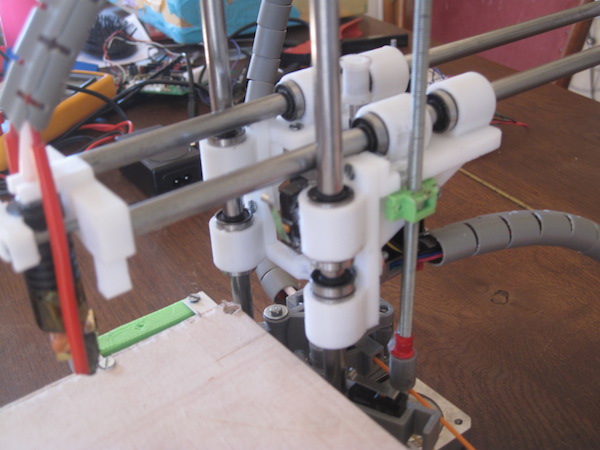Smartrap mini
|
English • العربية • български • català • čeština • Deutsch • Ελληνικά • español • فارسی • français • hrvatski • magyar • italiano • română • 日本語 • 한국어 • lietuvių • Nederlands • norsk • polski • português • русский • Türkçe • українська • 中文(中国大陆) • 中文(台灣) • עברית • azərbaycanca • |
NOTE: this page is in writing mode, estimated finished state : november 09 2013.
Release status: working
| Description | Smartrap mini is a small but strong reprap designed to be really easy to build and maintain.
|
| License | |
| Author | |
| Contributors | |
| Based-on | |
| Categories | |
| CAD Models | |
| External Link |
link to youtube video here not working ?? (watch?v=IU829xX4Wz0) and (watch?v=x4kLJ0yH08A) . TODO: add a video here !
Vision : goal
The goal for the Smartrap is to have the feeling of a lego assembly feasible by a 12 years old kid without complication.The Education part is very important and by building himself, the user should learn how every part is working in the all system, so he would be able to find problems and repair himself easily. In other word, the Smartrap tries to reach makers who are not real gurus like we have actually in the reprap world ( not negative meaning here, but only to help to spread the world and attire more people to this wonderful world of replicative-dIY-makers).
Other features in any order of importance are :
Real Reprap : most of the structure should be printed, so it can print itself for friends. Only the common base should be bought on special shops ( motors,hotend,controller,lm8uu,endstops).
Simple to build : I mean it! . No need for special tooling or ultra precision cut or drill or even adjustment. The final goal would be: no screw and everything come together by snap (almost).
Open source! .
Cheap as possible : fishing line, printed bushing?( not well working for me now) , cheapest electronics ( no heat bed, 4 motors, no fan).
Open to experimentation : Aluminium rails with 608zz, fixed axis with moving hotend, moving axis with fixed hotend..etc ( you should see photos down there).
Features
Print size : from 150x150x150 to around 250x250x200. The first prototype is 200x200x150.
PLA only : It's a political decision: Even if ABS gives better results , i really don't like the fumes and the ecological impact. PLA , beeing compostable and asking for only 60 watts alime, is far more interesting to me.
Layer height : not really tested for now, looks like 0.2 works well.
Printed parts: 13
Screws : M6 x2 , M3 x 16.
Non Printed parts : 6 smooth rods 8mm , 12 lm8uu, 1 M5 , 2 fishing lines 500mm , 4 nema17 motors, 1 hot-end j-head, 1 controler board , 3 mechanical endstops.
Assembly operations count : not much but not totally clear for now. I wai to assemble 2 or 3 more printers to make a good doc and video of asssembly .
Actual state and implemented features
The first model is working well. Better than we would think in fact. It's just nice to see how stable it is even it looks so small. That comes from the design choice of using 3 nema17 stepper motors as a structural base , that makes a very strong and heavy base ( 1,5 kg of steel metal).
Of course, lot of improvements are already in the list. The main concern was about the stability of z rods as we use plastic and not wood or aluminium. We use actually a bottom wood plank where we fix the base with a nice big m6 screw and it's very stable this way. There's no complicated operations on this plank but one hole to fix the big screw.
STL files, build instructions, photos, videos are still to come.
